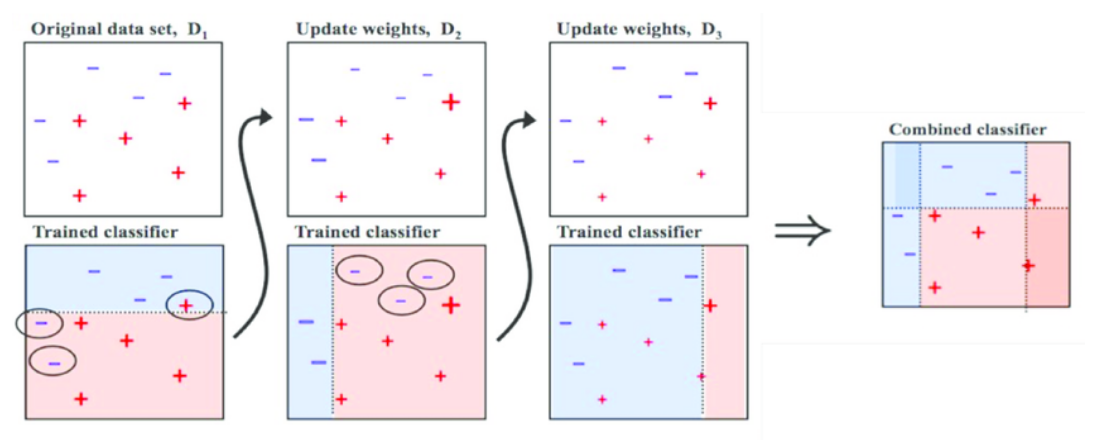AdaBoost
Boosting is an algorithmic paradigm addressing two major issues in machine learning:
-
It optimizes the biais-complexity trade-off. The learning starts with a basic class (large approximation error) and as it progresses the hypothesis class becomes more complex.
-
It allows to find predictors that are usually computationally infeasible to find.
Main idea: weak learners are "boosted" to become stronger altogether.

Weak learner (or $\gamma$-weak-learner): it’s an algorithm returning a function $h$ such that $L_{\mathcal{D}}(h) \leq 1/2 - \gamma$. In other words, it returns a simple binary predictor that does slightly better than a random guess.

We note:
-
Final predictor = weighted sum of weak predictors
-
More weights are given to observations that gave wrong prediction. In doing so, the classifier of the next round will focus on these observations. Warning: to see this, focus on the variation of $D^{(t+1)}_i$ and not just $w_t$.
Theorem: the training error of the output hypothesis decreases exponentially fast with the number of boosting rounds.